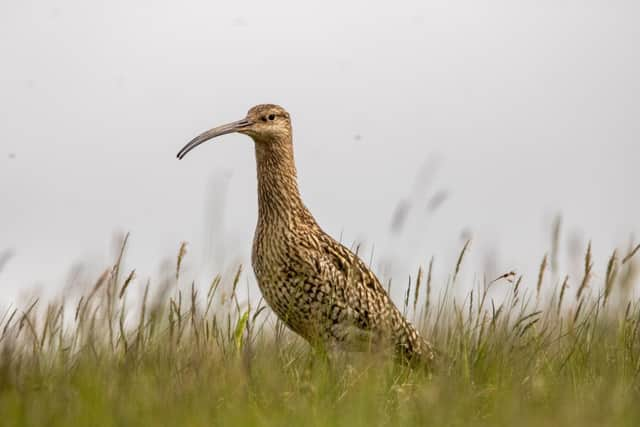Five Yorkshire estates taking part in biggest re-location of curlew eggs in a bid to increase numbers of endangered bird
The scheme to help boost the numbers of curlews launched last year with 40 eggs collected from grouse moors and adjacent grassland. The translocation was so successful that Natural England approved an expansion of the project this year and the number of eggs collected has tripled to 120.
Five estates in Yorkshire are taking part—West Arkengarthdale, Bolton, Gunnerside, Grinton, and Reeth, all of which have existing healthy populations of breeding curlew.
Advertisement
Hide AdAdvertisement
Hide AdKeeps will take eggs from nests that are likely to fail and at a time of year when the bird still has chance to lay again.


Ian Sleightholm, headkeeper of Bolton Estate, said this is an ideal opportunity to help expand the bird’s territory in southern England where they are extinct: “Ground-nesting birds face so many challenges and are in severe decline in most parts of England. This is one of the practical steps we can take to give the curlew a helping hand in the rest of the country.
“We prioritise nests that are likely to fail anyway – for example if the nest is too close to a footpath or if predators are likely to eat the eggs, or if it’s in an area of grass that might be cut for silage.
"There are many reasons why a nest will fail naturally. We also try to take the eggs at a time when there is a possibility the adult bird will re-lay before the end of the season.”
Advertisement
Hide AdAdvertisement
Hide AdAfter a period of natural incubation, the eggs are incubated artificially and closely monitored by project staff for about 16 days until judged viable to make the journey south.


At the other end of the country, the curlew eggs are again kept in temperature-controlled conditions and monitored daily by gamekeepers during hatching, whereupon the chicks are reared in special pens, safe from predators, until they are old enough to feed themselves. The juvenile birds are then released into suitable habitat.
A far higher number than predicted survived to release stage last year – 37 of the 40 – providing the confidence to expand the scheme in order to benefit more parts of the country.
This year three locations are receiving curlew – The Duke of Norfolk’s Peppering Estate in Sussex, Lord Cranborne’s Estate in Dorset and Mr Philip Merricks’ National Nature Reserve at Elmley in Kent. It is hoped the birds will survive to adulthood and return in two years’ time to form new breeding colonies in these areas, and so headstart the curlew once again in Southern England.
Advertisement
Hide AdAdvertisement
Hide AdMr Sleightholm added: “The curlew is site-faithful so they will return to the same spot to nest each Spring. Here in the Dales the breeding success is due to careful habitat management and predator control, which has proven to be crucial for this species.”


In the UK, curlew breed predominantly on unenclosed upland heath, bog and grassland (‘moorland’) and marginal upland grassland habitats where high quality predator control is undertaken. The number of curlew has fallen by about 60 per cent in England and Scotland since the 1980s. Increasing woodland cover, a rise in the number of generalist predators and changes in farming practices have all contributed to the decline.
The curlew is now considered to be one of the most urgent conservation priorities in the UK.
Curlew need to fledge 0.7 chicks per pair per year to maintain a stable population. On estates managed for grouse in northern England there are sufficient numbers to harvest a proportion of the eggs, without impacting the breeding population.
Advertisement
Hide AdAdvertisement
Hide AdThe participants in the curlew translocation project are The Duke of Norfolk, Lord Cranborne, Mr Philip Merricks, Mr Tom Orde-Powlett, Yorkshire Dales Moorland Group, Natural England, the National Gamekeepers’ Organisation and the Game & Wildlife Conservation Trust. Professor Ian Newton is the scientific adviser to the project.
Last year The Yorkshire Dales National Park drew up a draft list of 41 native species that were considered to be a risk and needed more work to conserve and increase numbers.
It featured 12 birds including the curlew as well as swifts and moor birds such as hen harrier and black grouse.
